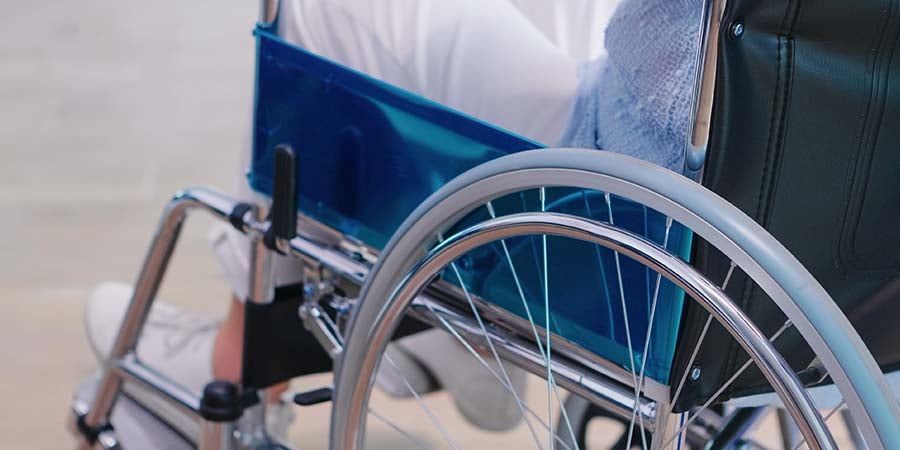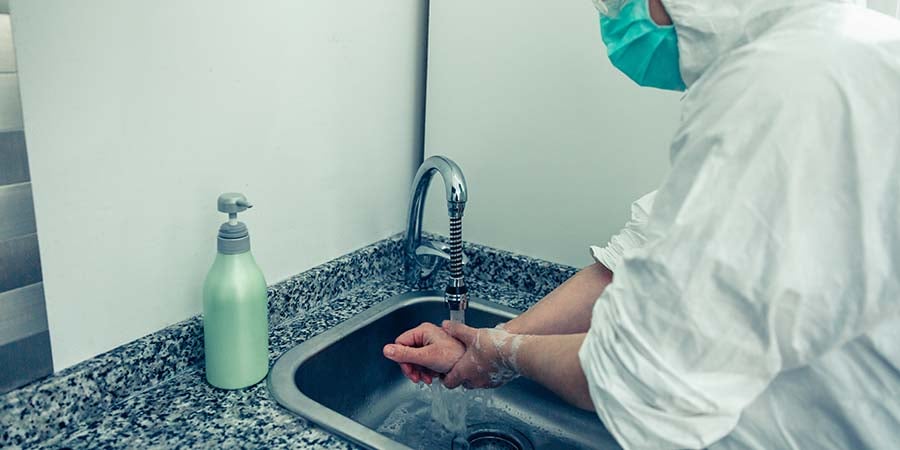Share this
Healthcare Facility Safety: Plan Big, Think Small
by HEPACART on Sep 09, 2021
Facility managers must focus on the small and mundane — the things that, if left alone, could be dangerous to occupants.
The structural engineering failure that led to the tragic Surfside condominium collapse on June 24, 2021, was an extremely unusual event. Probably as rare as the crash of a modern airliner, or perhaps even more so. While buildings under construction are known to collapse, the sudden collapse of an occupied 40-year-old-building with no outside forces acting on it is incredibly uncommon.
What should facilities managers do with news like this? No matter what type of facility you manage, such an event certainly makes you think. While you should take time to review the incident for potentially beneficial insights, building structural failures are rare. It's the host of other things that are smaller and more mundane but much more likely to pose a danger to occupants that should be a facility manager's primary concern.
Even in the unlikely event that you have seen and dismissed reports that warned of a small probability of catastrophic failure, you are likely to have returned to review that decision and taken remedial steps by this time. Therefore, let us assume you can check off the first three potentially catastrophic (and attention-grabbing) items on the list below. We'll focus on the smaller though far more frequent issues that affect the well-being of patients, visitors, and staff in healthcare facilities.
First, what are the big issues? There are some potential disasters for which every FM must have either a prevention or response plan. While they're extremely unlikely, they can't be ignored.
- Building collapse
- Terrorist attack
- Natural disaster
- Global pandemic
Yet the small stuff affects a far larger number of people and with much greater frequency. For example:
- Workplace injuries
- Illness from the spread of airborne pathogens
- Noise, dust, and other hazards caused by construction and renovation
Let's take a look at some of these more mundane issues and ways to prevent them.
Prevent Workplace Injuries
In hospitals, rehabs, and nursing homes, the frequent need to move patients who can't move themselves leads to overexertion by nurses and CNAs, which accounts for nearly 2/3 of all healthcare staff injuries. According to the February 2018 issue of Compact, a newsletter about worker's compensation, the next largest category is falls, slips, and trips, at about 20%, followed by contact (8%) and violence (7%).

While the nursing staff is not under the direction of the facilities manager, the following worthwhile practices could also be applied to maintenance staff:
- Establish a safety committee. It would discuss incidents and close calls, seek employee input, and provide opportunities for improvement and training.
- Create a program for early return to work. If you can provide light-duty work at full wages, you will increase the likelihood that they'll return to their regular duties sooner.
- Implement a nurse triage hotline. The hotline staffed by trained nurses provides first aid advice or directs the employee to approved healthcare providers. One triage provider for worker's compensation says this can lower claims by 15-20% and reduce costs by 25-30%.
- Develop a systematic method for investigating every accident and claim to identify instances of fraud. This will help manage costs and prevent losses in the future.
Minimize the Spread of Pathogens
In the healthcare environment, germs are spread by personal contact and by inhalation. A tiny virus such as SARS-CoV-2, which causes COVID-19, can hover in indoor spaces for hours. Obviously, efforts by healthcare FMs to keep the air in a hospital or nursing home free of infectious pathogens have been a high priority since COVID started rapidly spreading in 2020. But protecting patients, visitors and staff has always been about covering a broad spectrum of threats. In nursing homes, for example, dust, mold, and bacteria can wreak havoc. In hospitals, it has been shown that healthcare-associated infections can be reduced with systematic attention to hand hygiene, respiratory hygiene, and environmental hygiene.

Keeping humidity in the "Goldilocks range" of 40-60% helps decrease pathogen load and reduce HAIs. A fine-tuned HVAC system equipped with filters with a high MERV rating is a baseline requirement. Above and beyond that, supplemental air purification equipment can be added to dramatically reduce airborne viral load around those with compromised immune systems. Such equipment is designed around HEPA filtration, and for maximum effect, can be equipped with far-UVC light to neutralize viruses.

Contain Construction Dust
Another source of airborne pathogens is dust that contains an appalling variety of things from above ceilings and other nooks and crannies exposed during demolition. For that reason, hospital construction and healthcare renovations are in a special category of Bad Things Done to Air. They are, in fact, the very reason that HEPACART came into existence and is writing posts such as this one for you to read. Our company was founded to protect hospital occupants from maintenance and construction dust and produces various machines for that purpose, available for purchase or rental.
Since air pollution through construction is so common, the ICRA matrix was developed as a useful format for determining precautions hospital contractors ought to take. The worst-case scenario is Class IV, which puts heavy-duty demolition and construction occurring right next door to the most vulnerable, immunocompromised patients. For that, you're going to need ICRA Class IV-rated negative air machines/air scrubbers, air purifiers, and temporary wall barriers to keep noise and dust in their place while providing a clean, safe, orderly look to areas directly adjacent to the (constructive) mayhem.
Conclusion
To keep patients, staff, and visitors safe from indoor air pollution caused by construction or ceiling maintenance, read 3 Dust Containment Solutions for Class IV Construction Projects.
More reading:


